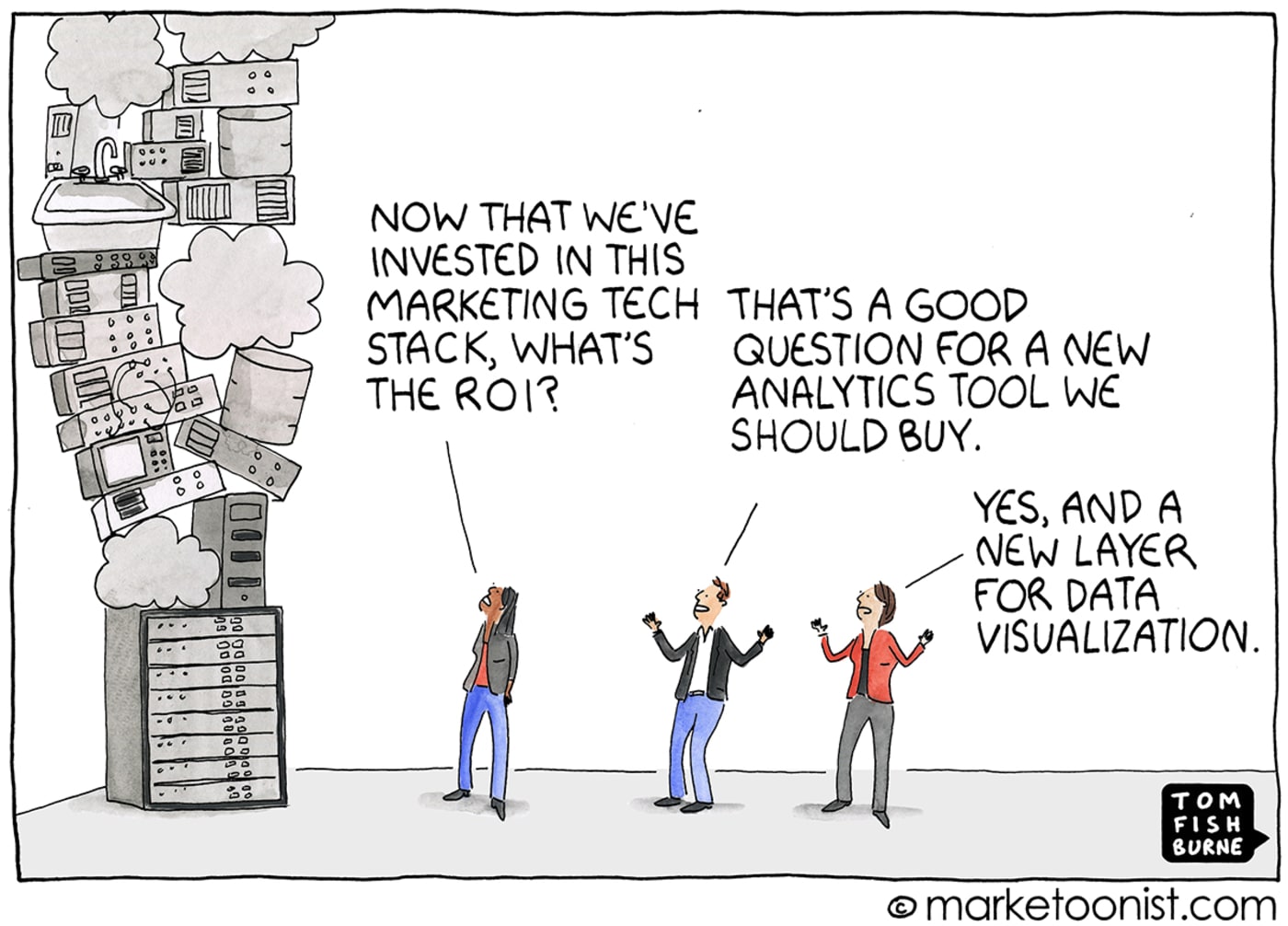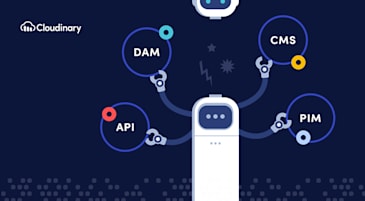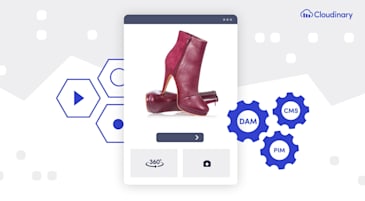Headless is not a buzzword anymore. In fact, the concept of headless architecture is gaining momentum due to the flexibility it offers for composing new experiences and for tackling the undue complexity of an ever-evolving technology stack. That’s because while the evolution of the martech landscape has enabled disruptive, digital innovations, the approach of buying point solutions for solving specific challenges can expose companies to the complicated nature of new technologies, systems, and platforms.
Back in 2017, when Cisco shared the nature of their marketing stack with 39 marketing technologies, the number seemed high until, according to an internet trends report, an average organization uses as many as 91 marketing cloud services. You read that right, it’s indeed 91, not a typo.

The problem with adding point solutions to move quickly? The more you add, the harder it gets to be agile.
Zooming in on the content and experience space of the martech landscape that includes such systems as CMS, DXP, DAM, PIM, and e-Commerce platforms, each of which holds web content in some form or capacity. As teams work with content across the publishing lifecycle, departmental solutions for managing visual media—primarily images and videos—lead to content silos and disparate systems.
Headless architecture, when applied to digital asset management (DAM), can help create a unified media library—across teams, functions, and systems.
A headless DAM system decouples the master asset library from one centralized interface to enable asset consumption from other systems via custom or prebuilt interfaces. It doesn’t necessarily mean API only (no UI) for developers.
Specifically, a headless DAM separates management and consumption of assets:
- Management essentially happens in the master asset library, with the DAM admin controlling the configuration, taxonomy, governance, and housekeeping.
- Consumption, which happens through a presentation layer, is any kind of interaction with assets, whether it is tagging an asset, repurposing an existing asset, or resizing or cropping it for publishing across touchpoints.
Choosing the appropriate presentation layer depends on your requirements and business needs.
- Build your own custom interface. This option, which requires myriad internal efforts to build, deploy, and maintain a custom UI, is more suitable for enterprises with adequate development resources, a need for customization, and a DIY attitude. Also, you must have access to robust APIs for upload, search, administration, provisioning, access control, and reporting.
- Bring the interface into the existing systems, i.e., decouple the head. You can do that with custom or prebuilt integrations in the form of widgets or plugins. This option is more suitable for teams that need access to the master asset library from the systems of their choice—with the advantage of having a cohesive, well-connected technology stack and making the asset library available to all the systems, without losing our heads.
On a day-to-day basis, users don’t need to interact directly with the DAM. While the content is centrally housed, all the DAM-related functionalities are extended into different systems of the technology stack. That means that assets are never checked out of the master asset library, making the DAM a true single source of truth for all teams and systems.
Behind the scenes, all the interactions happen via APIs. The promise of headless can be fulfilled only when the APIs are robust or, better yet, the underlying platform is built with an API-first approach, rather than as an afterthought.
Headless DAMs offer several distinct advantages over traditional DAMs:
- Custom UI. In contrast to the one-size-fits-all approach of even the best-performing traditional DAMs, a custom UI built on top of APIs enables functionalities that meet specific needs and preferences.
- Streamlined workflows. Besides being accessible through the main UI, all DAM functionalities can be extended into existing systems and workflows, leading to more adoption and creating a true single source of truth without silos.
- Greater agility. Building a best-of-breed stack with a headless architecture allows for agile replacements or upgrades to the stack, adapting to changing business needs while adopting new trends and technologies.
- Cross-platform data sharing. Different teams can share the same content repository across all the websites, apps, and systems for creating and delivering experiences, ensuring consistency and efficiency.
- Freedom for developers. With robust APIs and SDKs, developers can pick the programming language of their choice to build a custom UI or integrate with other systems. Such flexibility translates to higher development productivity.
Headless DAMs are ideal for organizations with:
- A complex technology stack with multiple content systems
- Multiple teams that create and publish content for different touchpoints
- A need for flexibility to continue using their custom workflow
- Adequate engineering resources if opting to build a custom presentation layer in house
For companies with a simple content-publishing workflow and no need to connect content across systems in the foreseeable future, a headless DAM could lead to overengineering the task of managing digital assets.
- For an in-depth description of how the headless approach fits into a broad e-commerce strategy, read our Guide to Building the Ultimate E-commerce Website.
- For details on how to streamline content delivery with the headless architecture, see our whitepaper Simplifying the Headless Architectural Paradigm.
- For more nuances on the benefits of the headless architecture and pointers on resolving the related caveats, as well as an enlightening recount of media experts’ real-world experience with headless, watch our webinar The Road to Headless.
- To learn the pros and cons of best-of-breed and best-of-suite models for e-commerce experiences and the advantages of adopting a headless architecture instead, read our blog Evaluating the Feasibility of Adopting the Headless Architecture for Your E-Business.
- Determining whether or not a headless architecture is right for your organization? Check out The Benefits of the Headless Architecture



